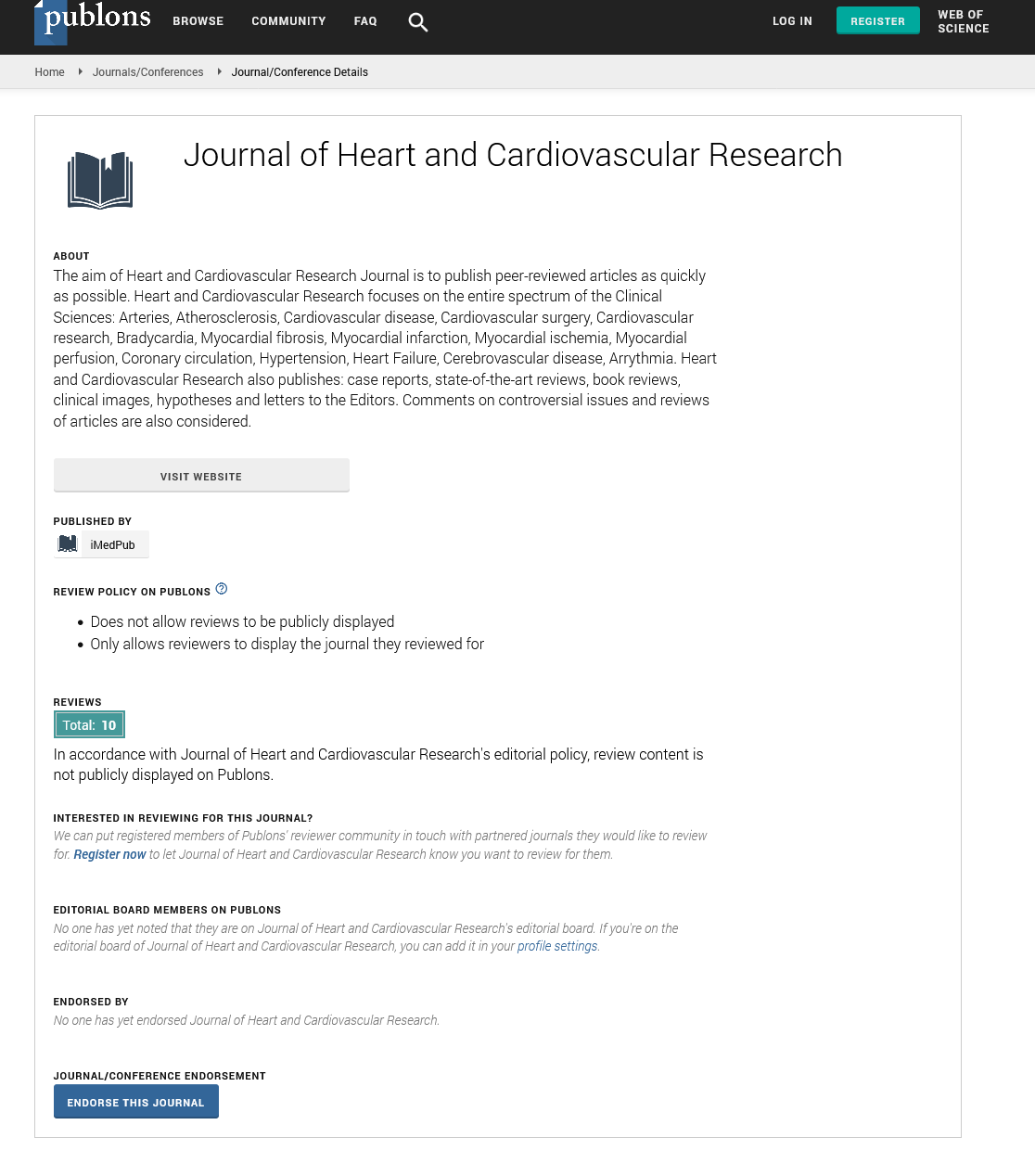ISSN : ISSN: 2576-1455
Journal of Heart and Cardiovascular Research
Impact of arterial stiffness on coronary lesions and in-Stent restenosis
22nd International Conference on New Horizons in Cardiology & Cardiologists Education
March 07-08, 2019 Berlin, Germany
Mohamed Abed BOURAGHDA
Blida University Hospital, Algeria
Posters & Accepted Abstracts: J Heart Cardiovasc Res
DOI: 10.21767/2576-1455-C1-003
Abstract
Background: Cardiac and cerebrovascular pathology and their complications are still the leading cause of morbidity and mortality in the world. Hypertension is a major risk factor for the occurrence of these events. The target organs, where there is an arterial pressure called central pressure, are subjected to it continually. Clearly, it is the central blood pressure (CBP) and not the brachial pressure taken from the armband monitor that is implicated in the genesis of this complications. However, the noninvasive measurement of the CBP takes into consideration only one measurement point on the arterial tree while it undergoes variations from the center to the periphery related to the arterial viscoelastic properties resulting in an amplification phenomenon (of the CBP and Pulsed pressure (PP)), which is a reliable parameter for evaluating arterial stiffness and whose reduction results in a negative impact on the occurrence of cardiovascular events (CV)
Conclusion: This innovative work, carried out in our laboratory, confirms the stronger link between CBP and CV risk, particularly in its pulsatile component, where it proves to be more powerful. This finding is obtained by means of a reference measurement method on a North African population of consecutive patients. Thus, we have demonstrated that the reduction of the central pressure amplification, which is a reliable to arterial stiffness, is an independent factor of severe coronary disease involvement, with all that this may imply from a prognosis.
Keywords: Hypertension, invasive systolic blood pressure, pulse pressure, central and pulse systolic blood pressure amplification, indexed left ventricular mass, diastolic function, stent restenosis.
Biography
Google Scholar citation report
Citations : 34
Journal of Heart and Cardiovascular Research received 34 citations as per Google Scholar report
Journal of Heart and Cardiovascular Research peer review process verified at publons
Abstracted/Indexed in
- Google Scholar
- Sherpa Romeo
- China National Knowledge Infrastructure (CNKI)
- Publons
Open Access Journals
- Aquaculture & Veterinary Science
- Chemistry & Chemical Sciences
- Clinical Sciences
- Engineering
- General Science
- Genetics & Molecular Biology
- Health Care & Nursing
- Immunology & Microbiology
- Materials Science
- Mathematics & Physics
- Medical Sciences
- Neurology & Psychiatry
- Oncology & Cancer Science
- Pharmaceutical Sciences
